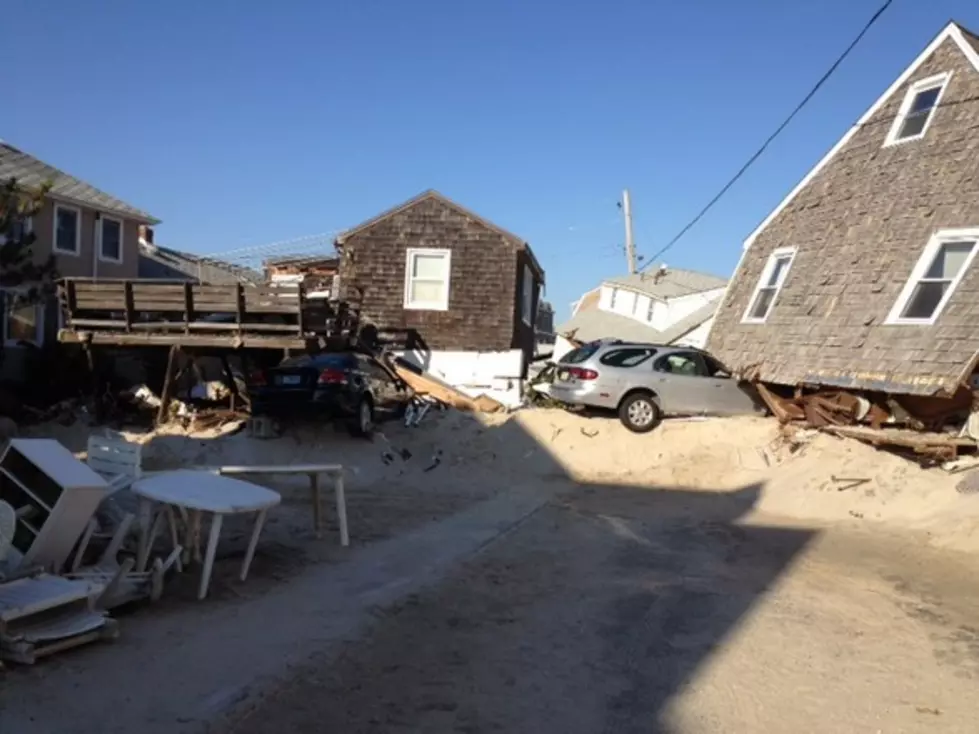![Federal Sandy Rebuilding Task Force Announces Strategy [AUDIO]](http://townsquare.media/site/394/files/2013/06/ocean-grove1.jpg?w=980&q=75)
Federal Sandy Rebuilding Task Force Announces Strategy [AUDIO]
The potential for future flooding and sea level rise is as at the heart of a list of policy initiatives released by the federal Hurricane Sandy Rebuilding Task Force on Monday.
The 69-point report calls for projects to focus on strengthening communities, so if and when, another storm hits, the financial and human damage can be lessened. It calls for strengthening to major infrastructure projects, energy and fuel infrastructure systems, and the creation of better planning tools and standards for communities rebuilding storm-damaged areas.
The recommendations call for the creation of newer flood protection standards for federally funded projects, as well as the promotion of technology that will help builders and engineers predict where flooding might be an issue. The plan didn't stress specific infrastructure types, but focused on natural barriers including wetlands and sand dunes.
Staci Berger, Executive Director of the New Jersey Housing and Community Development Network, says while some communities were already pursing preventative rebuilding strategies after Sandy, many were not.
Berger notes in the weeks after Sandy many communities rushed to rebuild, not always considering the ramification of their decisions.
"In the rush to rebuild, some of those places rebuilt their boardwalk right in the same place because they were encouraged by the Governor to get everything back up and running right away," Berger said.
"Not everybody got the chance or took the opportunity to say 'Where should we be building? Where should we be implementing a blue acres program? Where should we be putting a public park instead of putting in homes or businesses?'"
The task force also endorsed an ongoing competition, called "Rebuild by Design," in which 10 teams of architects and engineers from around the world are exploring ways to address vulnerabilities in coastal areas.
In addition to the immediate rebuilding efforts, Berger says the initiatives take into consideration the next wave of federal money to come and addresses long term rebuilding concerns.
"Some of the issues encouraged in this report are housing consoling. For example, providing enough resources for folks that need some direction and some help to make sure they're making solid decisions for their families and their communities."
She notes it also addresses community input for rebuilding programs.
"Even though communities are rebuilding in one way, the residents of those communities don't have as much feedback on the programs that are being deployed."
A large section of the report dealt with how federal authorities should respond once a storm has struck.
Among the recommendations are:
- Federal agencies should streamline their review processes for reconstruction projects related to Sandy. It said that if standard government permitting timelines are applied, some rebuilding projects might have to undergo redundant reviews by multiple agencies and could be held up as long as four years. Some of those reviews will be consolidated to save time and money, the task force said.
- The Small Business Administration's disaster loan program, which gave $3.8 billion in low-interest loans to storm victims, performed better than it did during Hurricane Katrina but should be tweaked further. Training programs for loan officers should be improved. Eligibility for some loans should be loosened slightly. Approvals should happen faster for people who meet credit requirements. A separate application track should be established for small businesses, which often need money fast to survive but wind up languishing in long queues behind huge numbers of homeowners.
- Federal mortgage policies should be revised so homeowners can get insurance checks faster. After Sandy, many homeowners complained that mortgage banks delayed delivering their insurance payments because of bureaucratic issues.
- It noted that because of reforms to the financially distressed National Flood Insurance Program that began before the storm, many thousands of people who live in low-lying areas will likely see huge premium increases if they don't lift their homes up on pilings. The task force said that for many homeowners, both options will be unaffordable. It recommended further study of that dilemma.
"Unfortunately we know with climate change happening in real time we are going to see additional disasters, hopefully not of the magnitude of Sandy but it's better to be prepared than surprised," Berger said.
More From 92.7 WOBM










